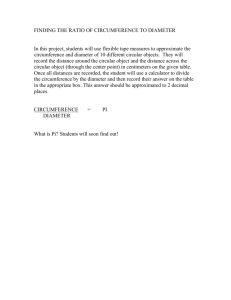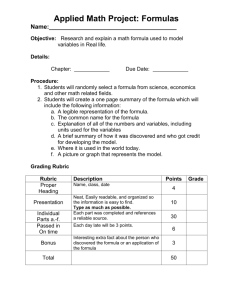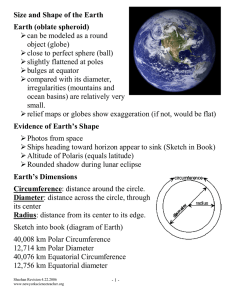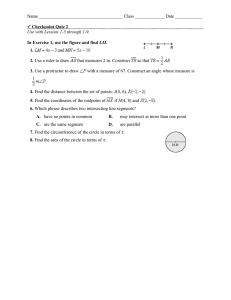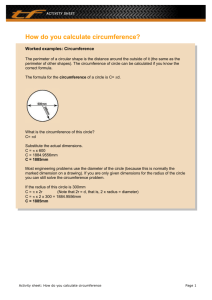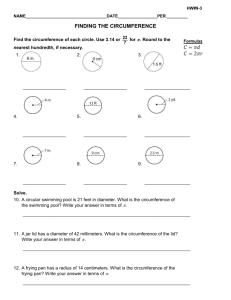The Circle Lab
advertisement
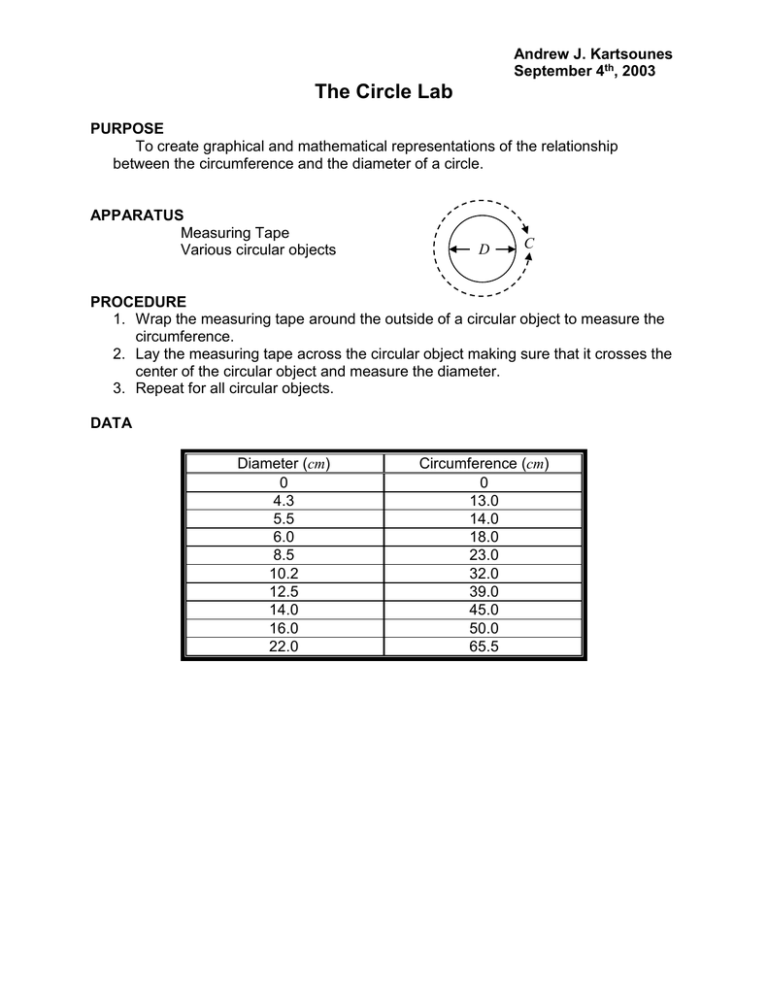
Andrew J. Kartsounes September 4th, 2003 The Circle Lab PURPOSE To create graphical and mathematical representations of the relationship between the circumference and the diameter of a circle. APPARATUS Measuring Tape Various circular objects D C PROCEDURE 1. Wrap the measuring tape around the outside of a circular object to measure the circumference. 2. Lay the measuring tape across the circular object making sure that it crosses the center of the circular object and measure the diameter. 3. Repeat for all circular objects. DATA Diameter (cm) 0 4.3 5.5 6.0 8.5 10.2 12.5 14.0 16.0 22.0 Circumference (cm) 0 13.0 14.0 18.0 23.0 32.0 39.0 45.0 50.0 65.5 The Circle Lab page 2 EVALUATION OF DATA We graphed the circumference vs. the diameter and got a straight line of correlation coefficient 0.9962. Since the relationship is linear and the line contains (0,0), the circumference is directly proportional to the diameter. CONCLUSION As stated in the EVALUATION OF DATA section, the circumference ( C ), the distance around the perimeter of a circle, is directly proportional to the diameter ( D ), the distance across a circle through its center. CD Since the y-intercept found from the graph is less than 5 % of the maximum circumference, the y-intercept is negligible. This means that when the diameter of a circle is 0 cm, the circumference is 0 cm. The slope of the graph is 3.075 cm , cm The Circle Lab page 3 which means that the circumference increases 3.075 cm for every 1.0 cm increase in the diameter. Therefore, our math model is C (3.075) D . The slope of a circumference vs. diameter graph is defined as pie ( ). can also be defined as the ratio of the circumference to the diameter of any circle. Substituting this into the math model gives us a general math model of C D A percent error calculation shows that our value of pie is off by only 1.5 %. The error in this experiment may have been caused by the difficulty in measuring the circumference of the circles given the elasticity of the tape and error when using the measuring tape to find the center of the circle to measure the diameter.
